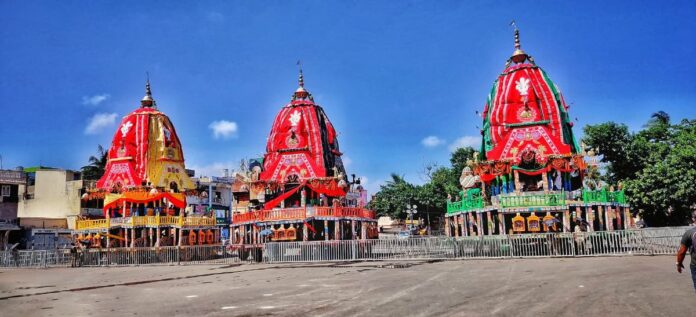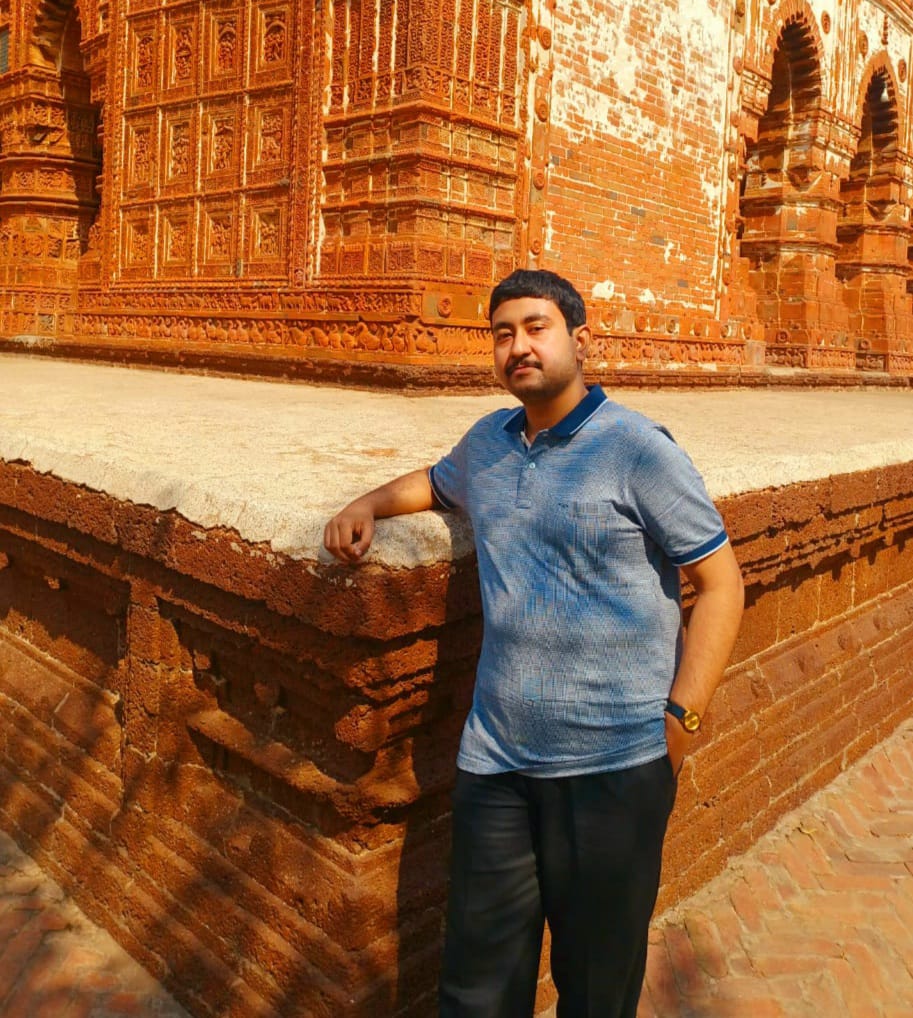It’s the time of the celebration of the divine trio; Balaram, Subhadra, and Jagannath. It’s the time to witness them travel amongst us, leaving their heavenly abode. It’s the time of Rathayatra. All of us have found it intriguing that this trio comprises two brothers with their sister in between. This is very different from traditional iconography where a prime god/goddess is worshipped with his/her consort and subjects. Today we’ll look into the earliest iconography that can be traced back to “Darubrahma” with his brother and sister, and also try to understand the significance of this trio.
Earliest Proof: in the Indus Valley?
We all know the Indus Valley civilization to be one of the earliest civilizations of the ancient world. But very few are accustomed to the idols unearthed there that contain the earliest essence of our religious traditions. Such a terracotta idol discovered in Harappa shows a Goddess. She, decorated with a majestic crown, stands in a warrior posture between two fearsome beasts. The beasts are trying to attack each other, and the goddess is neutralizing them. This idol has been interpreted as the manifestation of cosmic balance.
What’s the Significance?
In tantra and yoga, the vital energy of our body is thought to flow through two nadis, Ida and Pingala. Both are mutually opposite in all essence. Susumna stands in between them with the divine energy hibernated. Ascetic and tantric practices focus on evoking that energy through Susumna by controlling Ida and Pingala. Strikingly, this concept not only explains the idol of Harappa but also is considered an explanation of the iconography of Balaram, Subhadra, and Jagannath.
Balarama is pure white, calm, and sometimes ecstatic, whereas Jagannath is the supreme leader, dark as a monsoon cloud. Balaram is the fixed pivot, and Jagannath is the driving force. Opposite in all essences but at the same time, inseparable. And the neutralizing force in between is Subhadra, the cosmic mother. Strikingly, in mythology, there is mention of a story where Lord Vishnu and Lord Shiva fought against each other, and Goddess Durga neutralized them as her incarnation, Shantadurga. To this day, in tantric concepts, Balaram, Subhadra, and Jagannath are considered Shiva, Durga, and Vishnu.
Why Such Incomplete Iconography?
So now we can trace back the concept of this divine trio to the pre-Vedic earliest civilization of India. But why are their icons incomplete? The answer lies in the age-old art form of the Chalcolithic period. If we observe the artifacts of Harappa and Pandu Rajar Dhibi, we can identify some general characteristics. Large faces with prominent round eyes, pointed beak-like nose. Hands are either very large or abruptly end after sprouting from the body. The body is often limited to the abdomen. This is the exact schematic iconography that is followed to this day by Bengali potters and carpenters when making dolls or small goddess figurines. Without a doubt, we can say that the iconography of the divine trio is a timeless example of this ancient art tradition.
Conclusion
Thus, the tradition continues from the Harappa civilization to the present day. The same esoteric concepts, the same iconography still evoke emotions among billions of devotees. The rest of the world has long forgotten these ancient gifts of our ancestors. Yet, being the last safekeepers of this timeless tradition, we barely notice its significance. Pathetic, aren’t we?






